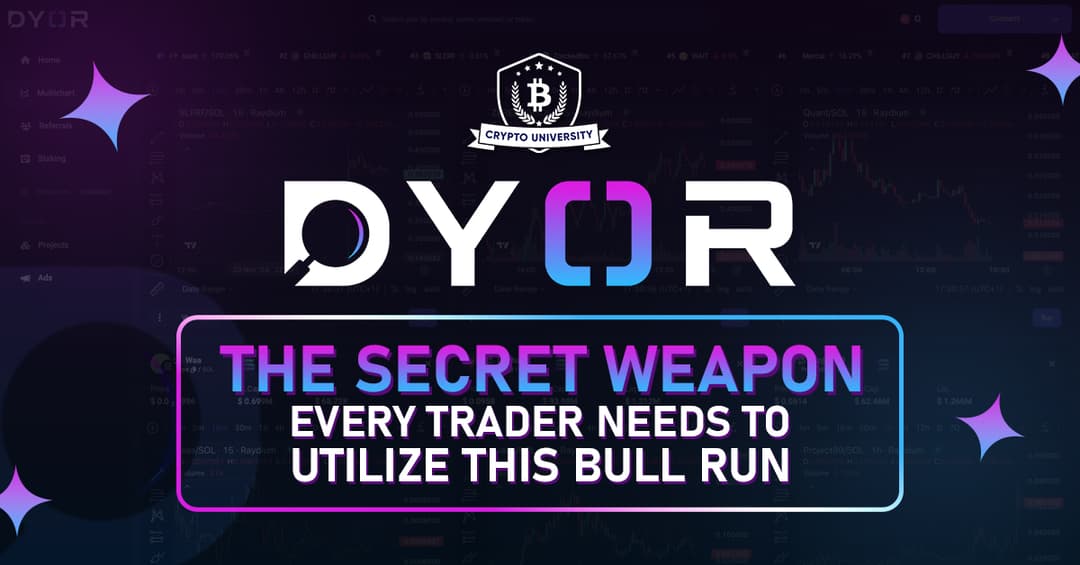No Adverts are available No Adverts are available
No Adverts are available
Easy Arbitrage With Crypto Radar
Edward Gonzalez • 11 February 2022
 No Adverts are available
No Adverts are availableWhen it comes to trading any market, there are a number of styles and methods that can be used. Many traders take a traditional approach and use technical analysis to project prices and make predictions on an exchange, while others make use of a process called arbitrage trading. The latter type of trading is when you buy assets on one exchange for a certain price and then sell them on another exchange for a marked up price. Let’s review the process with some key points and examples.
In short, arbitrage can be as simple as buying Ethereum from FTX for $2,950, withdrawing it to a crypto.com wallet address and selling at market price if the spread is higher than the $2,950 you paid plus the network transfer fee. Take note that it can be any asset and you can choose any exchanges. Ideally, you will be looking for an asset that has a wide spread across two exchanges, The above mentioned was just an example for the sake of relativity.
One thing to look out for when attempting arbitrage is volatility. You don’t exactly want to be making exchange withdrawals in heavily trending markets as prices will be scattered and transaction times will naturally be delayed. Consider the amount of time it will take to get the asset you are trading to get from exchange A to exchange B.
Another thing to note when arbitrage trading is transfer fees. Using the example above, if you bought 1 ETH for $2,950 and then had to spend $30 to transfer it you need to make sure you can sell it for more than $2,980 or you will be losing on that trade. (Amount spent + transfer fee = search amount needed to be profitable)
Perhaps most importantly, you must consider time. Some assets can be sent faster than others, but generally speaking most exchanges have a queue time for approval. After your withdrawal gets through the queue and is approved, it is up to the blockchain to get your funds over. If using BTC or ETH, it may take some time for the funds to make it over. Consider this as an uncalculated 30 minute window gives room for error.
So how do you find coins to trade and exchanges to manipulate? Thankfully there are different teams of researchers that have put together different websites to observe such statistics. A popular database is Crypto Radar. It allows you to see the cheapest prices to buy and highest prices to sell along with other helpful analytics.
When you land on the website, you will see something similar to the above. You can change the “Buy” setting to “Sell” and you can change “Bitcoin” to any cryptocurrency you desire. By clicking “Search” you will then see a list of exchanges with buy or sell prices ranging from high to low.
For example, let us say we want to find the cheapest place to buy LTC and the most expensive place to sell LTC.
After clicking “Search” you won’t see exactly the same as the market prices have changed but you will see something similar.
You will observe all the cheapest places to buy LTC. Note in the red underlined area there will be filters: choose “Realtime” to see real time prices. The preset shows a weekly average. Once you find where to buy LTC for cheap, you need to find where to sell for more. Change the filter at the top to “Sell” and then hit “Search.”
Once you have found a place to buy and sell the LTC, set up the plan. Considering LTC has a cheap withdrawal fee and relatively short transfer time it should not be subject to heavy volatility if there is not a landslide occurring in the market. You can project how long it will take you to buy (creating an account if necessary), transfer, and finally sell the assets. If you can project a reasonable time frame for a reasonable profit then you can try and make the trade happen.
Arbitrage trading can be profitable but takes a hustle to make things happen! It doesn’t hurt to try, just be sure you are willing to put in the work to find the absolute best places to buy and sell. You can learn more about the different types of trading through our website.
By viewing any material or using the information within this publication you understand that this is general education material and you can not hold any person or entity responsible for loss or damages resulting from the content or general advice provided here. Trading cryptocurrency has potential rewards, but also potential risks. You must be aware of the risks and be willing to accept them in order to invest in the markets. Only trade with funds you can afford to lose. This publication is neither a solicitation nor an offer to buy/sell cryptocurrency or other financial assets. No representation is being made that any account will or is likely to achieve profits or losses similar to those discussed in any material on this website. The past performance of any trading system or methodology is not necessarily indicative of future results.
Written by Edward Gonzales © Crypto University 2022
Share Posts
Copy Link
cryptouniversity.networkblog/easy-a...

Ambrose Okolo • 7 July 2025
VeChain’s Stargate: A Thrilling Leap into Decentralised Rewards Launched on July 1, 2025
Oh yes! VeChain has officially launched StarGate, a game-changing staking program that is set to ignite the blockchain world as of July 1, 2025. As part of the Hayabusa testnet and the ambitious VeChain Renaissance roadmap, Starga

Isaac Bandie • 26 May 2025
VeBetterDAO: The Future of Blockchain-Driven Sustainability
Small actions. Big impact. With VeBetterDAO, every eco-friendly choice earns you rewards. Join the movement that turns good habits into blockchain-powered incentives. vebetter.com
